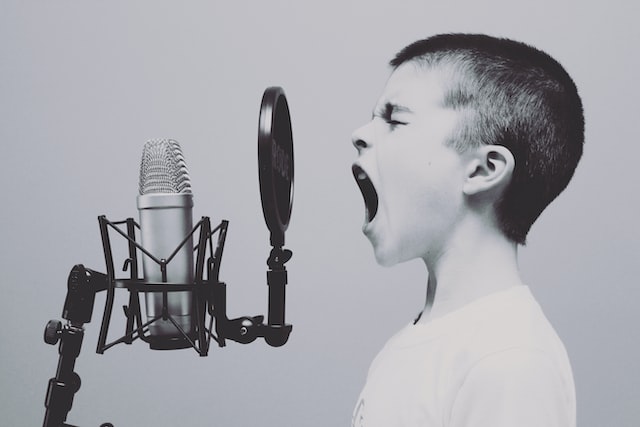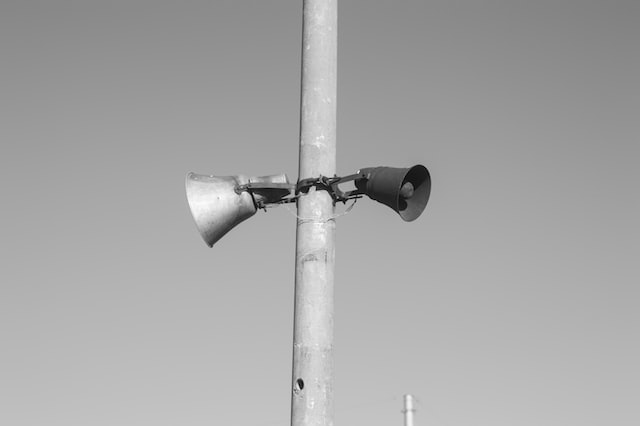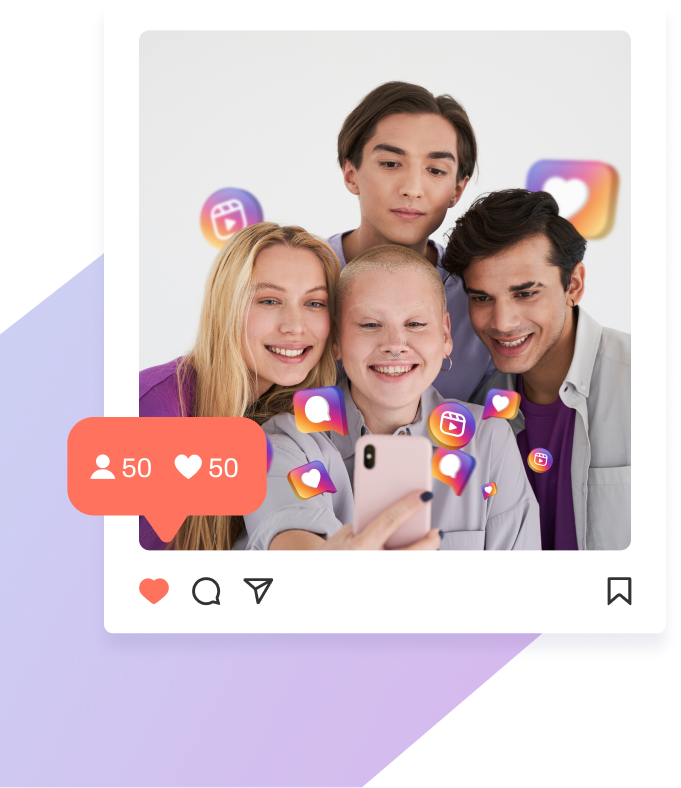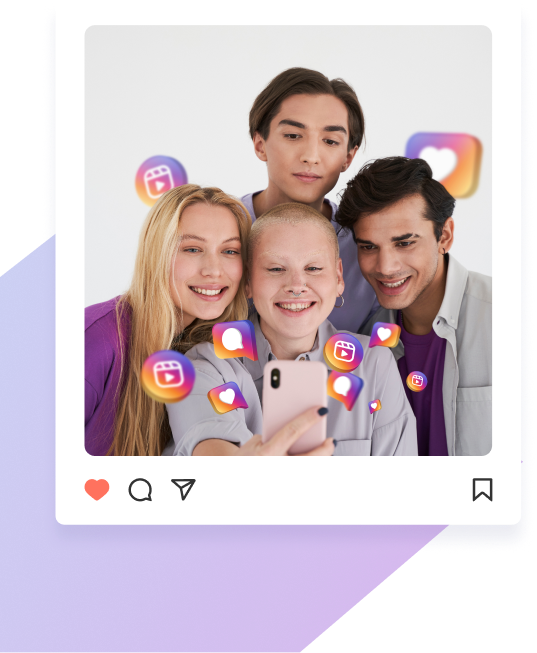Social Listening: Everything You Need to Know to Listen Well and Respond Appropriately to Your Audience
If you know how to listen well and what to listen to, you can get invaluable insights about what people think about your brand. Through social listening, you’ll better understand people’s perception about you and use the information to make the necessary changes to your content strategy, re-evaluate your product imaging and promotion, stay ahead of the competition, or get more likes on Instagram. Here’s everything you need to know to develop proper social listening skills.

What Is Social Listening?
Social listening means “listening” to the popular sentiment among your target audience to find out what they think about you and about things that are closely related to your business and industry. The Association for Qualitative Research defines social listening as a strategy that is “mainly used in quantitative research to supplement and even replace conventional tracking. The term refers to the analysis of comments and images that people put online and into the public domain, e.g. on Twitter or Facebook or on specialist blogs or forums.”
Also referred to as social media listening, the strategy, therefore, involves diving deep into social media and other platforms to find your target audience and monitoring their conversations and behaviors. More specifically, you’ll be listening to mentions of your brand, products/services, competitors, and keywords and hashtags related to you and your industry. It also includes analyzing the information you gather and drawing relevant conclusions to better understand your target audiences’ needs and to find opportunities to meet these needs.

What’s the Difference Between Social Listening and Social Monitoring?
Social monitoring is the process of keeping track of your target audiences’ brand engagement for the purpose of responding to them. Social monitoring identifies what your audiences are talking about. Social listening, on the other hand, answers the question, “Why are my audiences engaging in this or that discussion about your brand, product, competitor, or industry?” By answering this question, you can gain a better understanding of your audiences’ behaviors and needs.
Keep in mind that social listening also involves social monitoring. You need to gather the relevant data so you can do your analysis and draw your conclusion.
What Is the Value of Listening?
You can derive the following benefits from social listening:
- Get a concrete grasp of the public’s perception of your brand or products/services.
- Develop actionable insights pertaining to discussions and preferences within your industry.
- Gather adequate information to perform a competitive analysis.
- Gather and interpret information on campaign performance.
- Monitor and analyze audience response to an event.
Through social listening, you’ll be able to paint a clear picture of social media sentiment about your brand and your industry. You will also be able to detect shifts in the general sentiment and act accordingly to drive desired business results. Knowledge of your target audiences’ perception/s can help you identify what’s working and what isn’t, and design or redesign your marketing strategy or improve your engagement approach or customer service to deliver an appropriate response, e.g., address certain concerns or meet a specific need.
Social listening can also help you keep track of what your competitors are up to. Are they developing or launching new products? Is there an upcoming campaign or event that your shared audience is getting excited about?
Having your finger on the pulse of your target audience may help you discover amazing opportunities to organically get involved with online communities in a way that’s meaningful and helpful, and not gimmicky. You can, therefore, build genuine connections with people through mutual support; this is particularly valuable if you’re able to connect with creators, thought-leaders, or influencers in your industry through your shared goals or ideals.

Social Listening Tools
Social listening tools are technologies you can use to “boost” your listening capability and collect relevant data, and then perform reliable and in-depth analyses of your data. Here are the best options available.
Social Listening Platforms
These social listening platforms leverage the power of advanced AI technology to monitor your relevant mentions, collect data, and perform accurate analytics.
- Instagram Insights. This is Instagram’s native analytics tool which is free and available only for business or creator accounts. The tool delivers insights about “overall trends across your followers and your content’s performance with your audience. You can also view insights for specific posts, Stories, videos, reels, and Live videos you’ve created to see how each one performed and how people engaged with them.”
- Hootsuite. Hootsuite is one of the longest-running social media management platforms out there. Created in 2008, you can use the platform to monitor conversations, keywords, mentions, and hashtags across multiple social media pages from a single dashboard. For more advanced analytics, you can try Hootsuite Insights.
- Adview. This is another Hootsuite powered app that’s specifically designed for social listening on Facebook and Instagram ads.
- NetBase Quid. One of the most trusted companies for consumer and market intelligence, NetBase uses natural language processing (NLP) to obtain accurate customer sentiment.
- Talkwalker. This app offers advanced listening and real-time insights for over 150 million sources, including blogs, forums, videos, news, reviews, and social networks.
- Synthesio. The company delivers “total consumer understanding” by helping you “trace what your consumers say, do, and think online” using next-gen AI that identifies emerging topics and repeated consumer language.
- Mentionlytics. This app helps track mentions of your brand and products, competitors, and industry on social media, online news site, blogs, and other websites.
- Path Social. This growth service provides real-time analytics of follower growth, audience engagement, content performance, engagement sources, and competitor behaviors, among others.

Social Listening Examples
Social listening may seem like a daunting task; finding out what people say about your brand or product can either be exciting or intimidating. You’ll never know which way the wind blows until you actually go out there to discover what the overall sentiment is about you. Regardless of what you “hear,” however, remember that it’s an opportunity for you to deliver the appropriate response and make the necessary changes, so you can encourage a shift in overall perception. Here are some social listening examples per industry to help put you on the right track.
- If you’re in the travel and hospitality industry, social listening can inform you of seasonal demands, geographic locations with great potential, and perception trends for certain locations or your competition.
- If your business deals in consumer packaged goods (CPG), you can identify trends in demand, popular hashtags you can use in your content strategy, and potential untapped markets.
- For the retail industry, changing trends are, ironically, a constant. Identifying shifting trends can help guide your product development and promotion; social listening can connect you with the right influencer to collaborate with; and analyzing competitor behaviors can help you outperform them on campaigns.

True or False: Social Listening Can Help You Find Leads
The answer is not a simple true or false. If the purpose of your social listening efforts is to generate leads, then your entire strategy must be geared towards achieving this goal. Otherwise, whether or not social media listening can help you find leads would depend on the insights you’ll gain from the analysis of your data.
If you find out that there isn’t a lot of conversation and, therefore, interest in your brand or product, then your first priority should be building greater brand/product awareness; lead generation will soon follow. If your social listening analysis reveals that there’s a lot of excitement around a certain hashtag or event in your industry, this can be an opportunity for you to join the trend and reach a new audience. A great way to do this is by hosting an Instagram contest or an Instagram takeover.
How to Listen Well
Take note of these social listening best practices so you can get the best possible results for your efforts.
- Know what to listen for. Social media is a noisy place, and you’ll have to sort through all the unnecessary noise to hone in on the keywords and topics that are most relevant to your brand, industry, and Instagram goals — words and discussions that are most useful to you and give you actionable insights. If you need a place to start, use any of the following to do an Instagram search for your data gathering:
- Your brand name and Instagram username
- The name/s of your product/s
- Your competitors’ brand names and social media handles, as well as their product names
- Your slogan and those of your competitors
- Your branded hashtags and those of your competitors
- Industry buzzwords and hashtags
- Names and social media usernames of key people in your company and those of your competitors (CEO, VP, spokesperson, etc.)
- Campaign names and relevant keywords and hashtags
- Know where to listen. It’s not only about finding where your target audiences are actively having discussions; what’s more important is finding out where they’re talking about you and anything and everything related to you. This involves utilizing social listening on different platforms and other areas online to identify different levels of relevant discussions.
- Perform targeted social media listening. This means compartmentalizing your research to filter your results. You can filter by geography, hashtag popularity, or product category.
- Familiarize yourself with the overall sentiment around your brand. You’ll do this for the purpose of keeping track of your audiences’ shifting levels of interest and spotting any changes in engagement. You can then figure out what you need to change or improve to deliver the appropriate response and get your desired results.

Final Thoughts: Develop Good Listening Skills to Grow Your Brand on Instagram
Social listening is an essential element of any marketing strategy as it provides you with an opportunity to respond to relevant discussions which, in turn, can help drive results. It’s one of the few approaches that can effectively lead to accelerated organic growth — when you know how to listen well and how to respond appropriately.
Organic growth with genuinely interested and enthusiastically engaged followers can also be had with the help of an Instagram growth strategy expert, such as Path Social. In addition to offering advanced analytics for your social listening efforts, Path Social also gives you access to their advanced audience targeting capability — through their proprietary and innovative AI targeting technology — and the expertise of their in-house team of social media specialists. Start growing and gaining Instagram followers today!


Want Free Instagram
Followers?
Let our AI targeted organic growth work for you for free
Get Free Instagram Followers







